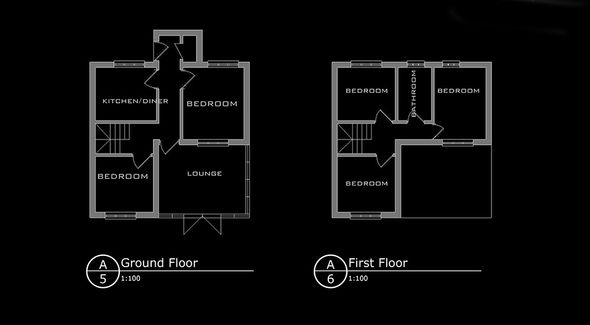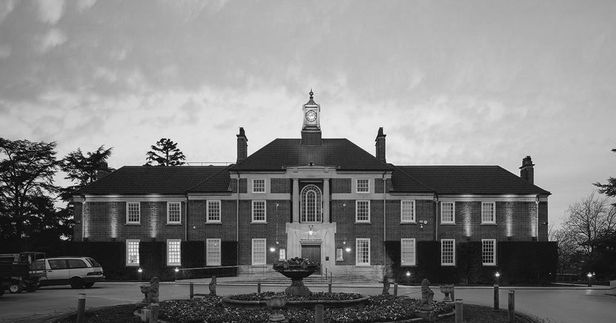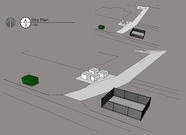
Planning Consultancy:
Certificates of Lawfulness
If you want to be certain that the existing use of a building is lawful for planning purposes or that your proposal does not require planning permission, you can apply for a 'Lawful Development Certificate' (LDC).
It is not compulsory to have an LDC but there may be times when you need one to confirm that the use, operation or activity named in it is lawful for planning control purposes, and it is Section 191(1) of the 1990 Town and Counrty Planning Act enables anyone to apply to the LPA for a decision.
You can apply to your local council for an LDC via the Planning Portal online application service. The application must provide sufficient information for the council to decide the application or else it may be refused. You will have to pay a fee.
If your application is partly or wholly refused or is granted differently from what you asked for, or is not determined within the time limit of eight weeks, you can appeal. Planning Appeals are made to the Planning Inspectorate.
Case Study: 13 Moreton Street, Prees, Whitchurch, Shropshire - Application for a Lawful Development Certificate for the proposed erection of a domestic garage - 22/05393/CPL.
The proposal relates to the erection of a single storey, pitched roof outbuilding in the rear garden of 13 Moreton Street. The building would have a total height of 4m, up to 2.5m to the eaves; the length of the building would be 12m and the depth would be 7.5m. The building would have a similar though smaller footprint and be sited in approximately the same location as an existing outbuilding, described under 22/02500/CPL as a prefabricated workshop, which would be demolished.
Assessment
It was necessary for Shropshire Council to consider if the proposal complies with the restrictions and limitations of Part 1, Class E of the Town & Country Planning (General Permitted Development) (England) Order 2015 (as amended) which relates to the provision within the curtilage of the dwelling house of—
(a) any building or enclosure, swimming or other pool required for a purpose incidental to the enjoyment of the dwelling house as such, or the maintenance, improvement or other alteration of such a building or enclosure; or
(b) a container used for domestic heating purposes for the storage of oil or liquid petroleum gas.
The proposed outbuilding would be a new structure and would not consist of the maintenance, improvement or other alteration of the existing outbuilding which would be demolished.
In the legal case Emin v Secretary of State for the Environment and Mid-Sussex DC (1989) 58 P&CR
416 [1989] GPL 909 case established that regard should be had not only to the use to which the Class E building would be put, but also to the nature and scale of that use in the context of whether it was a purpose incidental to the enjoyment of the dwelling house. The physical size of the building in comparison to the dwelling house might be part of that assessment but is not by itself conclusive.
To help the planners En-Plan and the owner identified the purpose and incidental quality of what is
proposed in relation to their enjoyment of the dwelling house and answer the question as to whether the proposed building is genuinely and reasonably required or necessary to accommodate the proposed use or activity and thus achieve that purpose. The incidental use cannot rest solely on the unrestrained whim of the appellant himself.
Shropshire County Council Planning Department accepted that a domestic garage would be capable of being a use incidental to the residential use of the main house. However, the total floorspace of the building would be approximately 96sqm, a significant scale; the main dwelling has a footprint of approximately 51sqm therefore a reasonable estimate of the total floor area of the two-storey house in the absence of floor plans for the dwelling would be around 102sqm.
On the balance of probabilities, it was considered that the proposed scale of activities and size of the building would be genuinely and reasonably required or necessary to accommodate the proposed uses as incidental to the enjoyment of the dwelling house as such. The proposed development would, therefore, constitute permitted development by virtue of the provisions of Schedule 2, Part 1, Class E of the Town and Country Planning (General Permitted Development) Order 2015 (as amended).
It is concluded that the proposed works would be deemed as ‘permitted development’
and formal planning permission would not be required.
Case Study: Certificate of Lawfulness of Existing Use and Development (CLEUD) under Section 192
Of the Town and Country Planning Act 1990 for ‘use of building for C3 (b) use by Charles Telford Housing limited” of 36 Withybrook, Woodside, Telford, TF7 5PY as C3 (b) unit.
Introduction
En-Plan: Planning & Architecture have been instructed by Charles Telford Housing Limited, to submit an application for a Certificate of Lawfulness of Existing Use or Development (CLEUD) in order to confirm the current C3 (b) use is indeed lawful at 36 Withybrook, Woodside, Telford. TF7 5PY.
A Supporting Statement was produced to accompany the application for a Certificate of Existing Use or Development in order to attain a legal determination from the Local Planning Authority (Telford & Wrekin Council) on the existing use. The property is owned by Charles Telford Housing Limited who currently use it for 16/19-year-old care leavers as assisted living to help in the transition from care to independent living. An OFSTED registration application is in progress and OFSTED have requested confirmation from the council of the proposed use class. We are of the view that a CLEUD application is the best way to provide legal clarity for all parties involved.
36 Withybook is an end terraced 3 bedroomed house on a residential estate currently utilised as a C3 (b) use. Historically the property has acted as both C3 (a) and C4 use. The property is post war in design and construction and typifies the design style and tenure pattern in the locality. The property has 3 downstairs rooms, 2 of which are used by the resident support workers. The 3rd is a communal lounge. The support workers use these 2 rooms as office space and for support/guidance sessions if they need more privacy than is afforded by the communal lounge/dining room. Both of the carer’s rooms also have sofa beds etc in the rooms in order to provide 24-hour cover. The level of care/support is low as all residents are 16 to 19 years and are not physically or mentally impaired, but having come from the care system residents do need assistance in the transition to fully independent living.
Each of the care leavers (residents) has his/her own bedroom on the first floor which is a typical bedroom in a household with bed, warbrobe, etc. There are no cooking facilities or private bathroom facilities inside the bedrooms with all these facilities being communal. There is also a large lounge containing sofas, TV etc, for everyone to use (as in a normal household), and on the other side of that large room is a dining room table where communal eating is encouraged, in order to foster friendships and a culture of mutual support.
The property has been refurbished to a very high standard, with all rooms and hallways fitted with interlinked smoke detectors. All rooms are fitted with fire doors and there are fire break doors through the hallway which contain windows, and the communal kitchen is compartmentalised with 30 minutes fire protection.
We assert this is a dwelling within Class C and, as such, the change of use from Class C4 to C3 falls within PD. Class C3(b) not more than six residents living together as a single household where care is provided for residents. Under Class C3(b) a dwelling house can include up to 6 residents living together as a household where care/support is provided.
The level of care is also important. This was considered in the High Court judgement of Crawley BC vs SSETR (2004). This ruled that even if there is full time care/support on site, this doesn’t mean the residents can’t form a single household. There is a significant amount of experience, appeals and case law which shows that supported living arrangements for up to 6 people can fall within C3b. There will be an element of care/support provided and the residents will have a connection to each other and function as a single household sharing facilities/activities. Also, where the number of residents is low then clearly it is much more like a family type environment.
In conclusion, a Certificate of Lawful Existing Use should be issued for the use of 36 Withybrook as a supported housing unit under use class C3 (b) as the proposal follows legal precedent for what constitutes a C3 (b) use, and the information presented in this application confirms that the proposal is neither a residential care home or hospital (use class C2). The residents will essentially live as one unit, which is in essence the whole reasoning behind the scheme as this model offers the most support to the residents as they move towards full independence.
The Borough of Telford and Wrekin hereby certifies that on 28/03/2023 the use and development set out in the First Schedule to this certificate in respect of the land specified in the Second Schedule attached to this certificate is lawful within the meaning of Section 191 of the Town and Country Planning Act 1990 (as amended), in accordance with the above plan(s) and for the following reason(s):
Based on evidence in the form of a previous appeal APP/Z5060/C/18/3214506, the Planning Inspectorate ruled that young adults can form a household. Whilst it was not specified the ages which constitute a young adult, it considered that this would be 16 – 18 years old. Therefore, on the balance of probabilities, the application for a Section 191 Established Use for an existing use as a supported housing unit under Class C3(b) at 36 Withybrook should be granted with specific reference to 3 young adults aged between 16 and 19 residing within the property. The material change of use is therefore immune for enforcement action under section 171B of the Town and Country Planning Act 1990 and is now considered lawful.
Case Study: 23/01092/PLUD Bethlem Royal Hospital Monks Orchard Road Beckenham BR3 3BX
Description of Development Installation of solar pv.(Lawful Development Certificate Proposed)
Proposal
This application seeks a lawful development certificate for the proposed installation of solar photo-voltaic panels at the host property. The application has been submitted with a supporting statement. Further information was provided on 13th July 2023 with regards to the separation between the proposed panels and the external edge of the roof on which they would be installed, confirming a separation of 1.3m from the panels to the roof edge.
Site location and key constraints
The application site comprises the Bethlem Royal Hospital which incorporates extensive grounds along with a wide complex of buildings of a varied style, scale and siting. The host building is Monks Orchard House which is the westernmost building on the wider hospital site. The building is largely single storey, set around a central courtyard.
Bethlem Royal Hospital, also known simply as Bethlem or "Bedlam," is one of the oldest and most famous psychiatric hospitals in the world. It is located in London, England, and has a long history dating back to the 13th century. Bethlem Hospital is renowned for its treatment of mental health disorders and has gone through various transformations throughout its existence.
Legislation
Part 14 of the Town and Country Planning (General Permitted Development)(England) Order 2015 (as amended) relates to renewable energy. Class J relates to the installation of solar equipment on non-domestic premises and provides a number of criteria with which intended development of this nature must
comply.
Planning History
The wider site has an extensive planning history associated with the hospital premises and the numerous buildings located within the wider hospital site. There is no immediately relevant recent planning history associated with the scope of this Lawful Development Certificate proposal.
Considerations
Class J relates to the installation of solar equipment on non-domestic premises and provides a number of criteria with which intended development of this nature must comply. Planning permission is required where the following criteria cannot be met:
(a)the solar PV equipment or solar thermal equipment would be installed on a pitched roof and would protrude more than 0.2 metres beyond the plane of the roof slope when measured from the perpendicular with the external surface of the roof slope;
(b)the solar PV equipment or solar thermal equipment would be installed on a flat roof, where the highest part of the solar PV equipment would be higher than 1 metre above the highest part of the roof (excluding any chimney);
(c)the solar PV equipment or solar thermal equipment would be installed within 1 metre of the external edge of that roof;
(d)in the case of a building on article 2(3) land, the solar PV equipment or solar thermal equipment would be installed on a roof slope which fronts a highway;
(e)the solar PV equipment or solar thermal equipment would be installed on a site designated as a scheduled monument; or
(f)the solar PV equipment or solar thermal equipment would be installed on a listed building or on a building within the curtilage of a listed building. With regards to J.1 (d-f) the building does not lie within the curtilage of a listed building, nor within a conservation area or on a site designated as a scheduled monument. With regards to J.1 (a) and J.1 (b) the submitted information indicates that the solar PV
panels would comply with these tolerances with regards to their projection relative to the host roof. With regards to J.1(c) the submitted information/drawing indicates that the panels would be separated from the edge of the roofs to which they would be installed by at least 1m and the separation was confirmed in writing by the agent on 13th July 2023.
Conclusion
Taking the above into account, assessing the scope of the revised proposals against the criteria listed within Class J, Part 14 of the Town and Country Planning (General Permitted Development)(England) Order 2015 (as amended) it is considered that the proposed installation of solar PV panels on the identified buildings would comprise permitted development.
Case Study: 23/01543/CP | Application for a Lawful Development Certificate for a Proposed Use or Development - Installation of new air source heat pumps, bin storage and electricity substation. | Blaise Primary And Nursery School Clavell Road Bristol BS10 7EJ.
The applicant site is Blaise Primary School, located in the residential suburb of Horfield and located
off Crow Lane with access into the school grounds off Clavell Road. The school itself is not in the conservation area but is located in close proximity to the Henbury Conservation Area and is within Flood Zone 2.
The application is for a Lawful Development Certificate for a Proposed Use or Development to check
whether the installation of new air source heat pumps, bin storage and electricity substation require
planning consent.
Relevant Planning Policy
National Planning Policy Framework – July 2021
Bristol Local Plan comprising Core Strategy (Adopted June 2011), Site Allocations and Development
Management Policies (Adopted July 2014) and (as appropriate) the Bristol Central Area Plan
(Adopted March 2015) and (as appropriate) the Old Market Quarter Neighbourhood Development
Plan 2016 and Lawrence Weston Neighbourhood Development Plan 2017 and the Hengrove and
Whitchurch Park Neighbourhood Development Plan 2019. In determining this application, the Local Planning Authority has had regard to all relevant policies of the Bristol Local Plan and relevant guidance.
Do the proposals require planning permission?
The proposed works are for ASHP, a bin store and a substation. The works are reviewed under parts 12 (for the ASHP and bin store) and 15 (substation) of the Town and Country Planning (General Permitted Development) (England) Order 2015 (as amended).
Part 12 of the General Permitted Development Order which deals with development by local authorities states that development is permitted if the folloiwng criteria are met:
A. The erection or construction and the maintenance, improvement or other alteration by a local authority or by an urban development corporation of—
(a)any small ancillary building, works or equipment on land belonging to or maintained by them required for the purposes of any function exercised by them on that land otherwise than as statutory undertakers;
(b)lamp standards, information kiosks, passenger shelters, public shelters and seats, telephone boxes, fire alarms, public drinking fountains, horse troughs, refuse bins or baskets, barriers for the control of people waiting to enter public service vehicles, electric vehicle charging points and any associated infrastructure, and similar structures or works required in connection with the operation of any public service administered by them.
Based on the information supplied, the proposed development would comply with all the relevant terms of Schedule 2 part 12 and 15 of the Town and Country Planning (General Permitted Development) (England) Order 2015 (as amended). The proposed development is therefore lawful and it is recommended that a lawful certificate is granted in this instance.
Case Study: Application for a Lawful Development Certificate for the existing use as a scaffolding yard/builders yard for the storage of building materials at Land At Long Road Terrington St Clement Norfolk - Reference 21/01375/LDE.
The main issue for consideration in the determination of this application is therefore whether, on the date the application was made (30 June 2021), the site had been used continuously for the purposes of scaffolding yard/builders yard for the storage of building materials for a period in excess of 10 years.
The onus of proof is firmly on the applicant. The NPPG advises on the relevant tests of submitted evidence for LDC applications. If the Kings Lynn and West Norfolk Council has no evidence of its own or from others to contradict or otherwise make the applicant’s version of events less than probable there is not good reason to refuse an application, provided the applicant’s evidence alone is sufficiently precise and unambiguous to justify the grant of a certificate on the balance of probability.
A signed Statement by the current owner (applicant) dated 27/08/21 stated. “…I am the owner of the land which formed part of what was locally known as ‘Kelly’s Scaffolding Yard’. I bought the parcel of land in 2018 from Max Snell. I too stored building materials on the site and this suited my work as a roofer. The yard and building has been used as storage for building materials since I purchased the property and this has been the case until now and the use has never stopped.” A further statement was submitted from the local butcher in Terrington St Clement indicating knowledge of the applicant and intention for the proposed use for storage and business purposes; also “Kelly Scaffolding was used there for over a decade.” Undated correspondence from Kelly’s Scaffolding Ltd signed by the former owners stating yard was used for 13 years from 8/8/05 to 10/11/18 and was in continuous use for that purpose during that time period. A Supporting Statement was also submitted by the agent in response to questions raised by the case officer. Since August 2019 the site has been the subject of an investigation by the Enforcement Team and complaints regarding fly-tipping via Environmental Health. The applicant has also submitted a statement from his accountant Andrew Smith (of Salway and Wright) confirming acquisition of the site in November 2018 and use for roofer business since that date.
The evidence therefore suggests that between June 2011 to June 2021 the site was used for Use Class B8 purposes. The Local Planning Authority has no evidence to contradict or otherwise make the applicant’s version of events less than probable. On this basis it is considered that the lawful use has been established for the area clearly defined on the now submitted plans and a certificate should be granted. The roadside close boarded timber fence is in excess of 1m in height and has been erected since October 2019 and does not have the benefit of planning permission.
With the Certifcate of Lawfulness now approved En-Pan could now focus on a new commercial building for the site and replace the dilapidated structure on site. En-Plan subsequnetly prepared a full planning application that was submitted to King's Lynn & West Norfolk Council Planning Department.
The principle of development was considered acceptable as the use of the land in association with the construction business is already established and the proposed building is relatively small in scale so would not significantly intensify the existing use.
On this basis, it is considered the development would not have any significant adverse impact on highway safety. Regarding contamination of land, it is considered due to the relatively low vulnerable use that it would not be sufficiently necessary to undertake a full characterisation and potential remediation of the land. However, in accordance with the advice from the Borough Council Environmental Quality team, the decision was conditioned to ensure that if any sources of contamination are discovered while the development is carried out are reported to the Local Planning Authority and dealt with accordingly. With these points in mind approval was granetd for the commercial unit.
23/04022/CPL | Application for Lawful Development Certificate for erection of ground floor side extension | Meadow Farm Charlton Hill Wroxeter Shrewsbury Shropshire SY5 6PS.
Located in the picturesque Shropshire countryside in Wroxter the applicants were keen to extend their property but had initially had issues with the Planenrs so looked to employ En-Plan to assist.
En-Plan looked to understand the history of Wroxeter, also known as Viroconium Cornoviorum, was a Roman city and archaeological site located in what is now Shropshire, England. It was one of the largest and most important Roman settlements in Roman Britain. The city was established around AD 58 and became a thriving urban center during the Roman occupation of Britain.
Under the permitted development rights En-Plan were able to gain consent for a side extension as shown and this was verified by a Certificate of Lawfulness Application wich was subsequnetly approved by Shropshire County Council and allowed the aforemtioned property development to progress. We have subsequently receievd approval for further extensions at the proieprgty and are have completed a building regualtions application to allow the project to progress to the building stage.
How can we help with your Certificate of Lawfulness Application
We’ve had great experience in dealing with property Development and can formulate an application and provide all the necessary information and drawings requited and will work with the Local Planning Authority to ensure a successful outcome. Please contact us for a free no obligation consultation and let us show you how our Planning Consultancy and in house architectural services can assist you in your Certificate fo Lawfulness application.


































